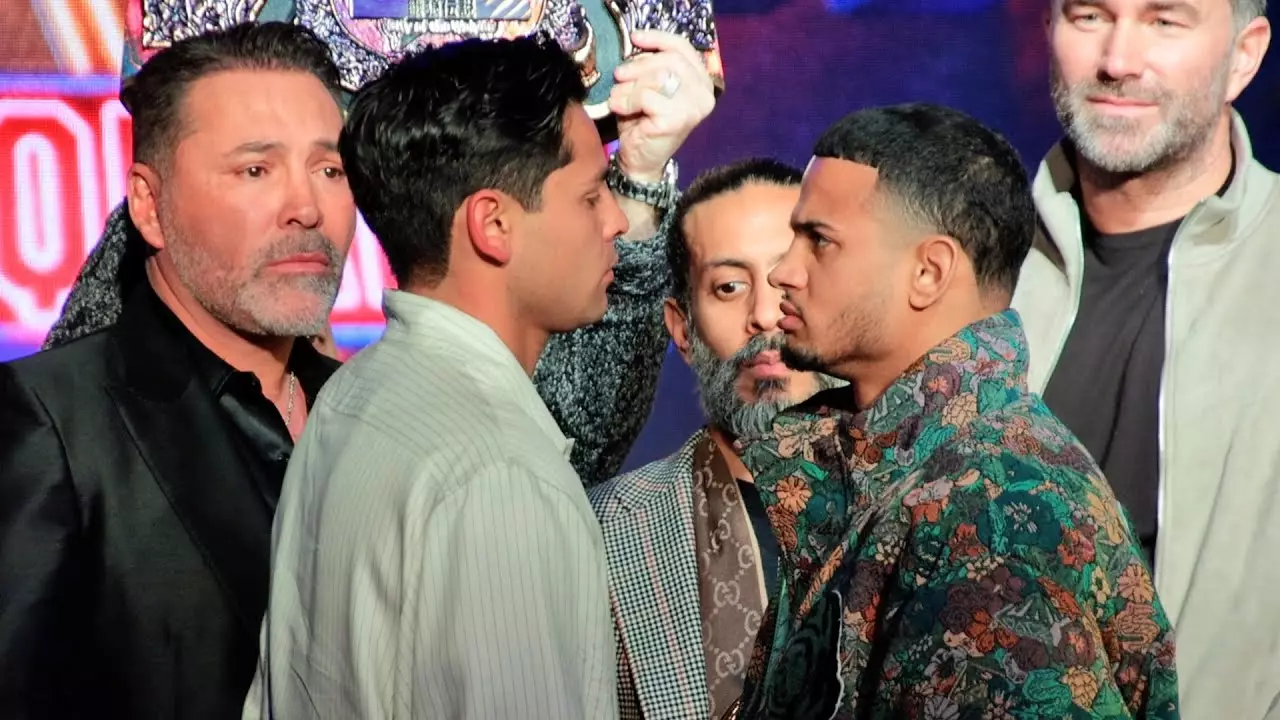Ryan Garcia, a rising star in the boxing arena, has recently announced an astonishing payday of around $20 million for his upcoming bout with Rolando “Rolly” Romero on May 2nd, during the Fatal Fury event in the iconic Times Square, New York City. This figure is astonishing not just for the scale of the payment but also for what many consider a “tune-up” fight ahead of Garcia’s rematch against Devin Haney scheduled for October in Riyadh, a fight that already has the boxing world buzzing.
Such riches are rarely seen in the sport, especially for a matchup that doesn’t carry the weight of a title on the line or a legacy-defining moment. However, the backing of prominent figures such as Turki Alalshikh appears to play a significant role in securing these lucrative purses for fighters. Garcia’s association with Alalshikh, a figure he openly values, suggests a new era in boxing financing, where promotional deals can redefine traditional pathways to wealth in the sport.
A Bold Financial Landscape
To many fans and analysts alike, this situation raises eyebrows. The fact that Garcia can earn an entire career’s worth of purses from a single match points to a larger trend of financial inflation within professional boxing. The distinction between a high-stakes fight and a less significant one seems to be diminishing, as promotional strategies amp up revenue streams. What is even more provocative is the implications this holds for fighter negotiations and competitive integrity; not only for Garcia, but potentially for his contemporaries as well.
Garcia’s fight against Rolly Romero, which many observers see as merely a preparatory bout, underscores the disparity of stakes faced by fighters on the same card. The upcoming co-feature is a challenging contest for Devin Haney against the formidable Jose Ramirez, creating a stark contrast in circumstances. While Garcia could potentially coast into his anticipated rematch with Haney, the latter is navigating a more hazardous path, adding layers to the narrative surrounding these fighters’ careers.
The Role of Promotion in Modern Boxing
Ryan Garcia’s praise for Turki Alalshikh underscores the changing dynamics of boxing promotion. Citing that Alalshikh is instrumental in making top-tier matchups—and specifically his own encounter with Haney—a reality, Garcia’s comments reflect an emerging theme in modern sport where the business side heavily influences the action within the ring. It is no longer merely about fighter skill but how effectively a promoter can engage the market.
In a world increasingly driven by pay-per-view buys and corporate sponsorships, the punchy dialogue surrounding fighters’ earnings also reflects a broader commentary on access to financial capital. Garcia’s frank acknowledgment of his inflated earnings raises pertinent questions about the meritocratic nature of sports. Are the hottest new talents earning due to grit and skill, or has the game shifted toward retaining relationships with influential promoters who hold the keys to financial success?
Pressure and Performance in the Spotlight
Amidst this backdrop, one has to consider the psychological weight that immense financial stakes can impose on athletes. The speculation around whether the necessity of winning remains intact for both Garcia and Haney could have serious implications for their performance. Garcia seemed light-hearted in interviews, perhaps blissfully unburdened by the stakes compared to Haney’s more serious landscape.
But with monetary incentives soaring, this new paradigm invites scrutiny. Boxing, traditionally celebrated for its purity and the valor of its competitors, faces the dual challenge of upholding its rich heritage while navigating a landscape increasingly dominated by economics. How fighters and their entourages manage this pressure will ultimately define this period in boxing, as it could sway talent choices, fight landscapes, and even fan engagement.
In essence, the new financial architecture that Garcia finds himself in not only exemplifies a shift in how boxing operates but also symbolizes a potential crossroads for the sport as it faces evolving market dynamics and sport integrity questions.

